Growing lettuce indoors is a fun and rewarding activity that allows you to enjoy fresh, nutritious greens all year round. Whether you live in a small apartment or have limited space, growing lettuce indoors can be a great way to get your gardening fix without having to worry about outdoor factors that can impact your crops. In this article, we will discuss the steps you need to take to successfully grow lettuce indoors.
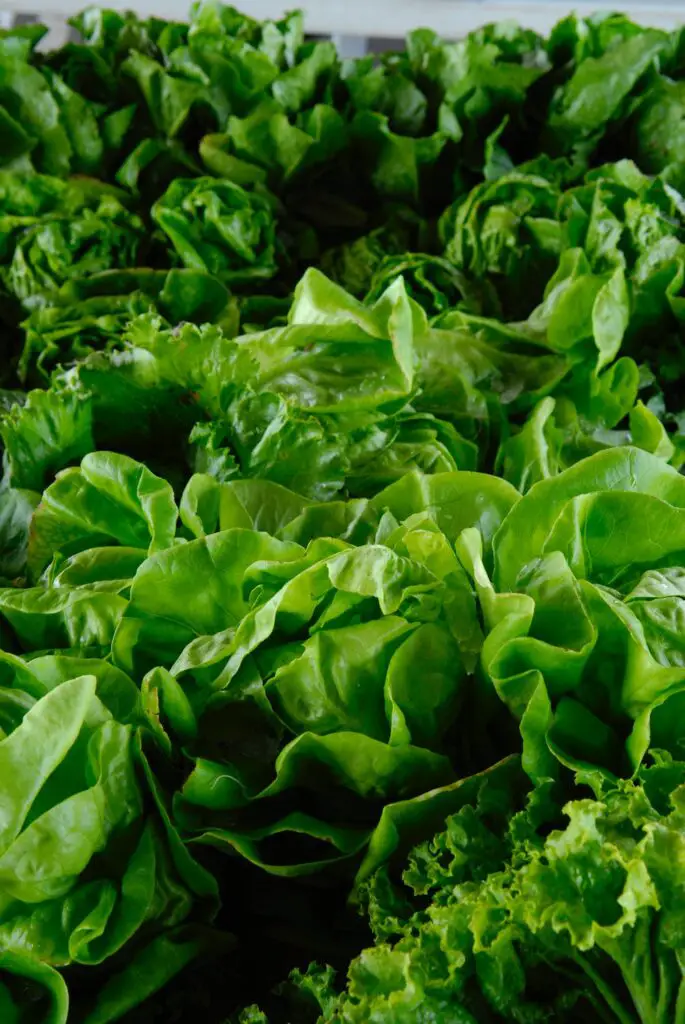
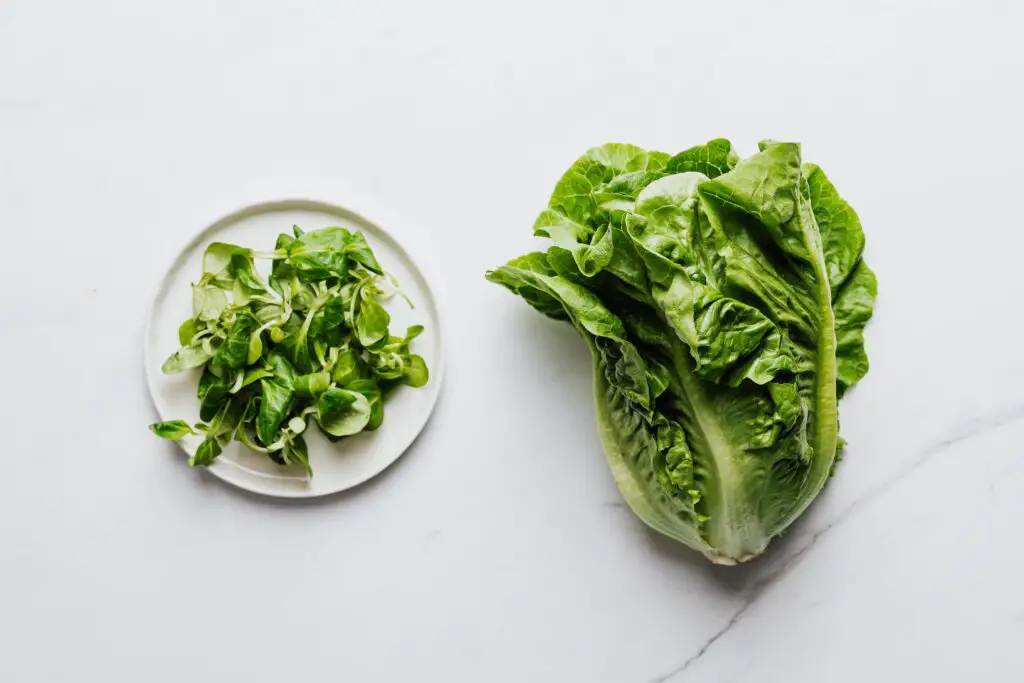
Table of Contents
Lettuce varieties
There are many types of lettuce that can be grown indoors, each with its own unique characteristics and flavour profiles. Here are some of the most popular types of lettuce to consider growing indoors:
Butterhead Lettuce
This type of lettuce has soft, tender leaves and a mild flavour. It is a good choice for indoor growing, as it does not require as much sunlight compared to other lettuces.
Romaine Lettuce
Romaine lettuce has a crisp texture and a slightly bitter taste. It requires more sunlight than butterhead lettuce, but can still be grown successfully indoors with adequate lighting.
Loose-Leaf Lettuce
This type of lettuce has delicate, loose leaves that come in a variety of colours ranging from green, red and purple. It is easy to grow and has a mild, sweet flavour.
Crisphead Lettuce
Crisphead lettuce, also known as iceberg lettuce, has a dense head and crunchy texture. It requires a lot of sunlight and cooler temperatures than other types of lettuce. However, it can still be grown indoors with the right conditions.
Mesclun Lettuce Mix
Mesclun is a mixture of various types of lettuce and other salad greens, such as arugula, spinach, and kale. It is a great choice for indoor growing, as it provides a variety of flavours and textures in one container.
When selecting lettuce varieties, it’s important to consider factors such as lighting, the temperature and humidity levels in your indoor space. Other factors to consider includes the availability of space you have for growing. Choose varieties that are well-suited to your specific indoor growing conditions to ensure a successful harvest.
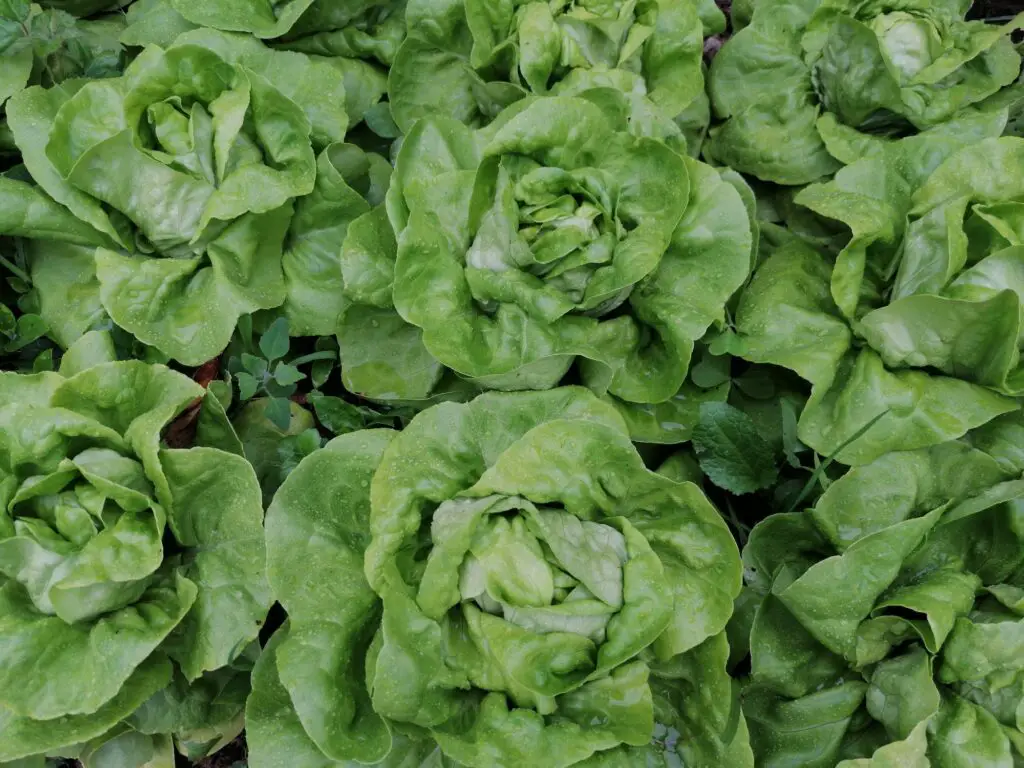
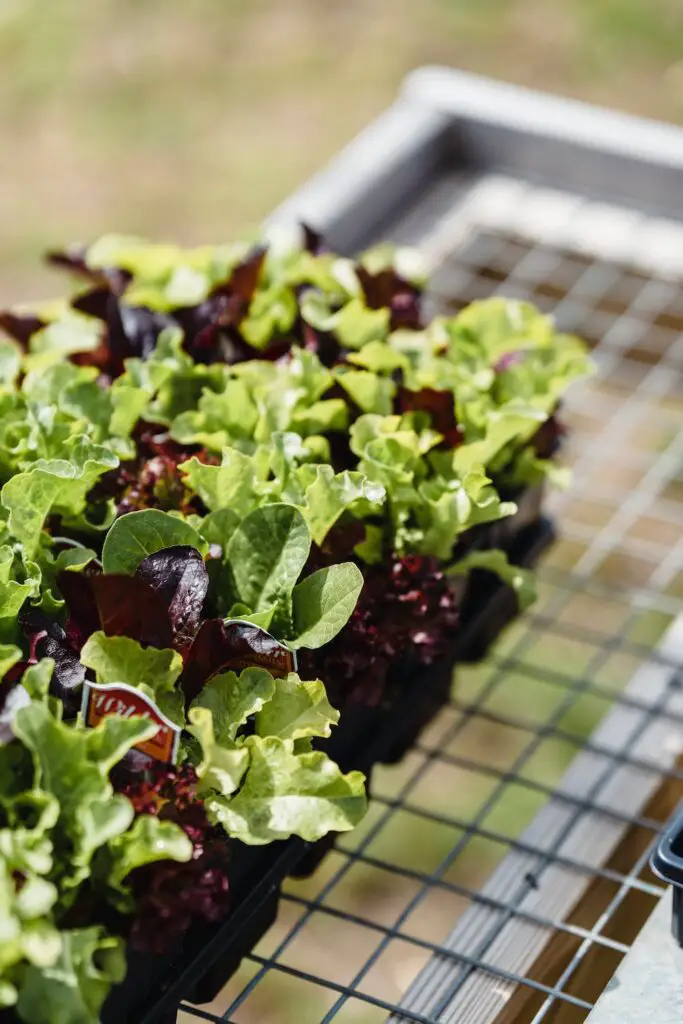
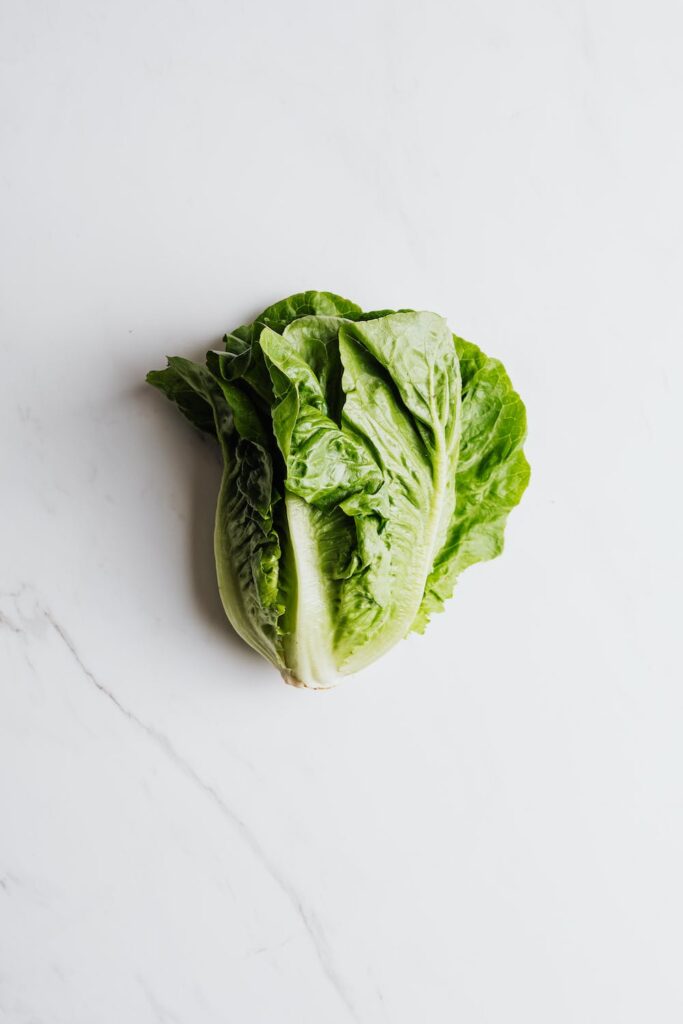
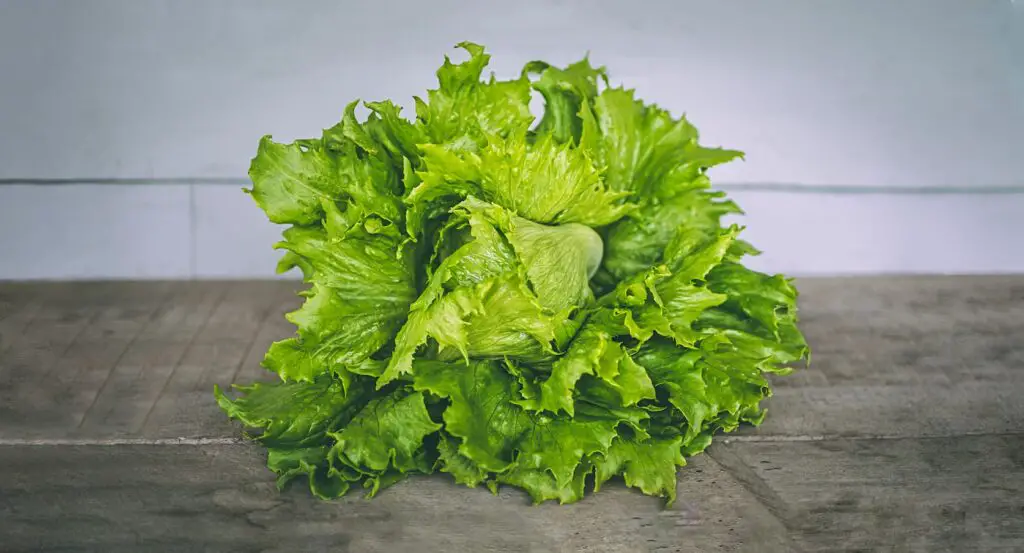

Choosing the Right Container
The first step in growing lettuce indoors is choosing the right container. There are several options available, including traditional pots, planters, and even hydroponic systems. When choosing a container, consider the size and type of lettuce you want to grow. For smaller varieties, such as butterhead or romaine lettuce, a container that is at least 6 inches (15 centimetres) deep and 8 inches (20 centimetres) wide should suffice. For larger varieties, such as iceberg lettuce, you may need a deeper and wider container.
In addition to size, you should also consider the material of the container. Plastic and ceramic pots are popular choices, as they are lightweight and easy to move around as needed. If you prefer a more eco-friendly option, you can also opt for biodegradable containers made from coconut coir or peat moss.
Another factor to consider is drainage. Lettuces need good drainage to prevent water from accumulating around the roots, which can lead to rot and other issues. Make sure your container has drainage holes at the bottom to allow excess water to escape.
Choosing the Right Soil
Once you have chosen your container, it’s time to select the right soil for your lettuce plants. Lettuce prefers a soil that is loose, well-draining, and rich in nutrients. Use a commercial potting mix or make your own by combining equal parts of peat moss, vermiculite, and perlite. Before planting your lettuce seeds, moisten the soil to ensure it is evenly damp throughout. You can also add a slow-release fertiliser to provide your plants with the nutrients they need to thrive.
Planting Your Seeds
When planting lettuce seeds, make sure to follow the instructions on the seed packet for the optimal planting depth and spacing. Lettuce seeds should be planted about 1/4 inch (0.6 centimetres) deep and spaced 4 to 6 inches (10 to 15 centimetres) apart. To ensure a steady supply of lettuce, you can stagger your planting by sowing new seeds every two weeks. This will allow you to harvest lettuce continuously throughout the growing season.
Caring for Your Plants
Once your lettuce seeds have been planted, it’s important to care for your plants properly to ensure healthy growth and a bountiful harvest. Here are some tips to keep in mind:
Lighting and Watering
Lettuce plants require at least 12 hours of bright, indirect light each day to grow properly. If you don’t have access to natural light, use grow lights to provide your plants with the necessary light. Place the grow lights about 6 inches above the plants and adjust the height as they grow taller. Lettuce plants require consistent moisture to grow, but overwatering can lead to root rot and other issues. Water your plants when the soil feels dry to the touch. Water deeply, but avoid getting the leaves wet, as this can encourage the growth of fungal diseases.
Temperature and Fertilising
Lettuce plants prefer cooler temperatures, ideally between 60 and 70 degrees Fahrenheit (15 and 21 degrees Celsius). Avoid placing your plants in areas that are too hot or too cold, as this can impact their growth and overall health. To promote healthy growth and a bountiful harvest, fertilise your lettuce plants every two weeks with a balanced, water-soluble fertiliser. Follow the instructions on the fertiliser package and avoid over-fertilising, as this can lead to nutrient burn and other issues.
Pest Control
Indoor lettuce plants are generally less prone to pest problems than outdoor plants. However, it’s still important to keep an eye out for common pests such as aphids and spider mites. You can use natural pest control methods such as spraying your plants with a mixture of water and dish soap, or introducing beneficial insects such as ladybugs or lacewings.
Harvesting Your Lettuce
Lettuce plants are ready to be harvested once they formed a rosette of leaves, usually within 40 to 60 days after planting. To harvest your lettuce, use a clean pair of scissors to snip off the leaves at the base of the plant. Leave about 1 inch (2.5 centimetres) of growth above the soil to encourage regrowth. You can also harvest the entire plant by pulling it out of the soil, but this will not allow for regrowth. If you plan to harvest the entire plant, make sure to do so before it starts to bolt (i.e. produce a flowering stem), as the leaves will become bitter and tough.

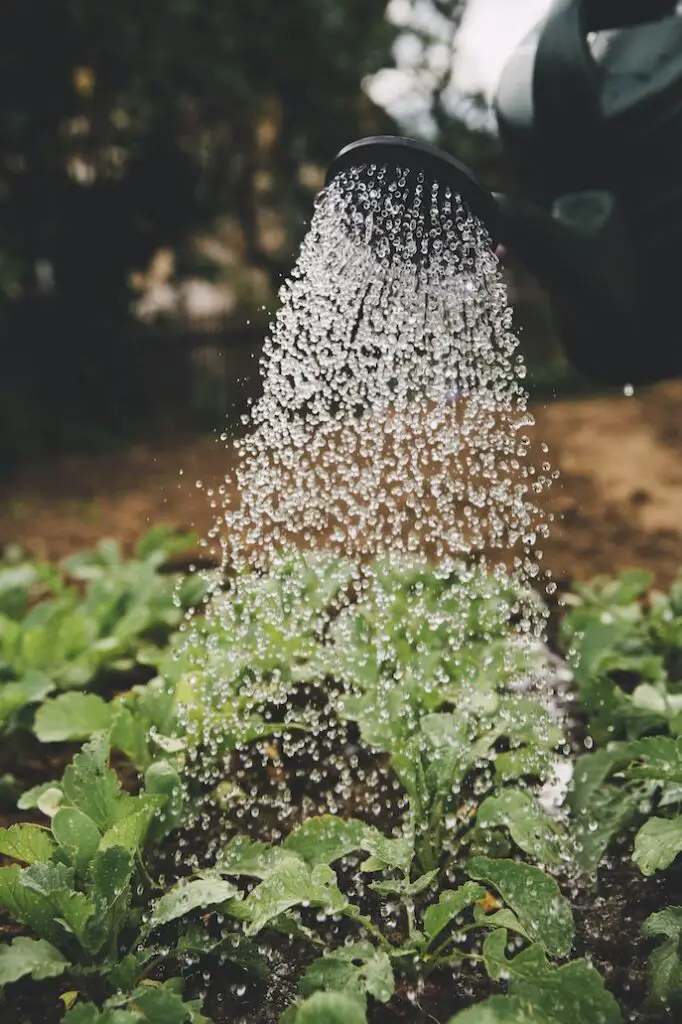
Tips for Success
Here are some additional tips to keep in mind for growing lettuce indoors:
- Choose a location that receives bright, indirect light, such as a south-facing window or a room with grow lights.
- Keep your lettuce plants away from heat sources such as radiators or vents, as this can cause them to dry out.
- Use a fan to provide gentle air circulation, which can help prevent fungal diseases and strengthen the plants.
- Monitor your plants regularly for signs of pests or disease, and take action promptly if you notice any issues.
- Rotate your plants every few days to ensure they receive even light exposure and avoid leaning towards the light source.
- Consider using a trellis or support system for larger varieties of lettuce, as this can help prevent the plants from becoming top-heavy and falling over.
Conclusion
Growing lettuce indoors is a fun and rewarding activity that can provide you with a steady supply of fresh, nutritious greens all year round. By choosing the right container, soil, and lighting, and caring for your plants properly, you can enjoy a bountiful harvest of delicious lettuce that you grew yourself. Whether you are a seasoned gardener or a beginner, growing lettuce indoors is a great way to get started with indoor gardening and explore the joys of growing your own food.
